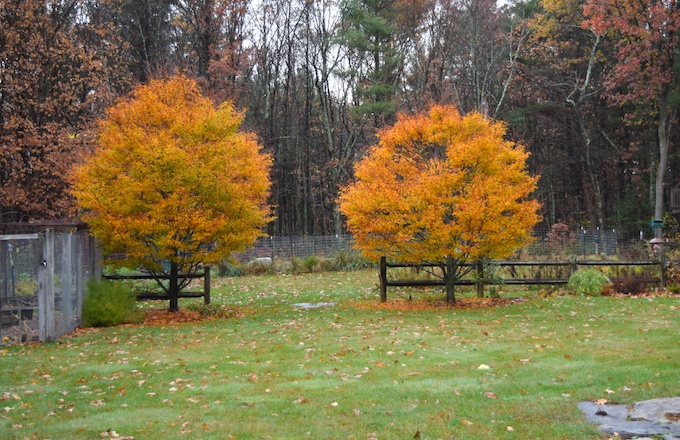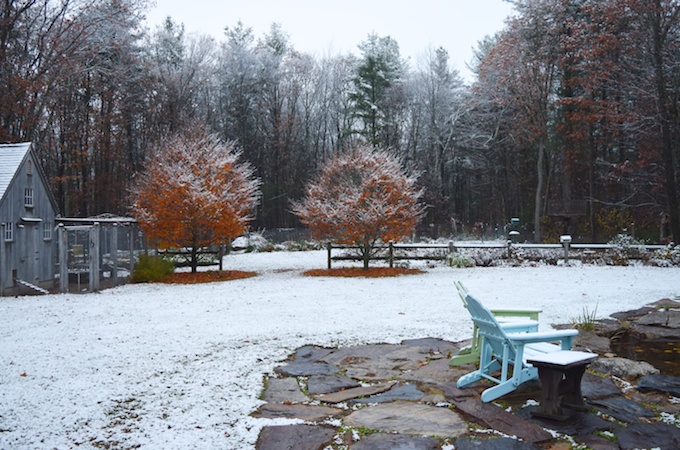Many people are surprised to learn that chickens don’t (and shouldn’t) sleep in nests. Rather, chickens sleep on roosts. If we humans tried to sleep while balancing on a bar, we’d fall off, but birds curl their feet around the roost, and lock their flexor tendons, so that even when thoroughly relaxed, they stay put. (Think about it. This is why you don’t see birds falling out of trees when they take naps!) I take chicken anatomy into account when building roosts for my coops. I like round bars – it’s easier for the hens to stay latched on. Some people advocate for flat roosts, thinking that the hens can better cover their cold toes with their feathers. My hens hunker down just fine on round roosts, and they haven’t had frozen toes yet.

You might think, but wouldn’t they be cozier in nests? The answer is no. Chickens produce manure all day and all night. They poop. A lot. If they sleep in the nesting boxes, then they’re sitting on a pile of damp manure. Eggs laid in those nesting boxes will be filthy. When chickens sleep on a roost, their manure drops down into the bedding and the hens don’t breathe in moisture and ammonia fumes all night. This is why roosts should be up high and why coops built like dog houses are a bad idea. If your chickens are roosting only a few inches off of the floor of the coop, then they’ll be prone to respiratory ailments all year round, and frostbite in the winter.
Despite the benefits of roosting, some chickens might decide to sleep in the nesting boxes. An ill chicken may take to a nesting box. Sometimes a hen that is molting will stay in a box because she is feeling (literally) prickly, and her pecking order has been shaken up because of her exposed skin; the box will feel like a safe place to her. Broody hens will also sleep in nesting boxes. You can take a hen from a nesting box and put her on the roost at dusk, and often (but not always) she’ll stay put. Young birds need to learn to roost. I’ve written about that here and here.
The dowels should be about 1 1/2 inches in diameter. Plan on at least six inches of roost per bird. In the winter they’ll huddle up for warmth, in the summer they won’t crowd so tightly together. Hens are fussy about who they sleep next to, so plenty of space will prevent squabbles.
Note that this roost is attached to the wall with hinges. I can lift it up to clean underneath it. Also note that it leans against the wall at a slant. That way the hens on the lower rungs don’t get pooped on by the girls above. I like tiered roosts because the old hens use the steps to make their way to the top, and to get down again in the morning.

Roosts are also used during the daytime. Betsy, who is a very, very old hen, rests indoors while the others are out and about. It’s a peaceful place for her.

I provide plenty of outside roosts, too. It’s a way to create more usable space in a small pen. Roosts are especially welcome when it’s muddy and snowy as the hens appreciate perches that are high and dry. Branches make for attractive and interesting roosts.

Roosts also enrich the environment. I keep stumps in the run, and move them about every week or so. The hens seem to like the change of scenery.

Veronica likes the top of the ladder.

Phoebe also makes use of the roost. The inside corner protects her from bothersome chicken feet, but still allows her to be right in the middle of the action.


















